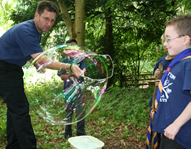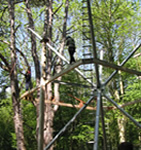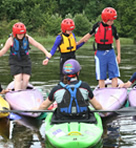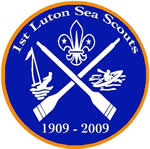

First Luton Sea Scouts
Established 1909


Royal Navy Number:69 Charity Number:300465
Group Correspondence:25 St. Andrews Close, Slip End, Luton, LU1 4DE
- Home
- The Group
- Group Programme
- Beavers
- Cubs
- Scouts
- Water Activity Days
- Photo Gallery
- Welcome Pack
- Contact Us
- Explorers
- Links
- County Safeguarding Information
Group History
The 1920's
The group continued to do well throughout the 1920’s, in 1924, we again won the Bedfordshire county competition.
In 1929, the scoutmaster, Mr. Tansley who had led the group for 12 years lost his wife and then his two sons through illness within a short space of time and was forced to resign.
Clem Brown, a young assistant scoutmaster took charge of the group but resigned shortly after. Without leadership the group began to have problems. A headline in the Luton News even reported that there were problems!
The assistant district commissioner, ‘Beano’ Bennett took charge. However he had problems running the group because he was additionally leading the 2nd Luton at the time who also couldn’t get a leader. This became such a big problem that in December 1929, the Luton News ran a story stating that if no leader could be found, the group was to close.
Cyril Welch, who had become the Scoutmaster of 13th Luton, suggested that the 1st, 2nd and 13th scout groups should be amalgamated to form one troop. This happened and Cyril took charge of the group. In his personal notes from the first meeting, he said:
“I went to the first meeting taking my boys with me. I had 16 lads. There were about 20 of the 1st and 18-20 of the 2nd – what a mob!! The stable (H.Q) was dimly lighted by hurricane lamps and paraffin wall lamps. One could just see from one end to the other where all these boys were packed … the floor was dangerous, all holes and lose boards everywhere. I don’t know how an accident was avoided.
Of the 1st, about 4 had uniforms, of the second about 3, it was just impossible to make a go of it as it was.
I had a friend who acted as Assistant Scoutmaster for a few months to help me and he had a vapour lamp – now we could see what we were doing and avoid the holes in the floor!”.
Gradually the three units became one, the uniform being influenced by each. Today, we can still see this in the group neckerchief. The blue and gold colours coming from the 13th and the green triangle in the corner coming from the 1st. The uniform remained grey, the predominant colour of the uniform of the remaining boys.
